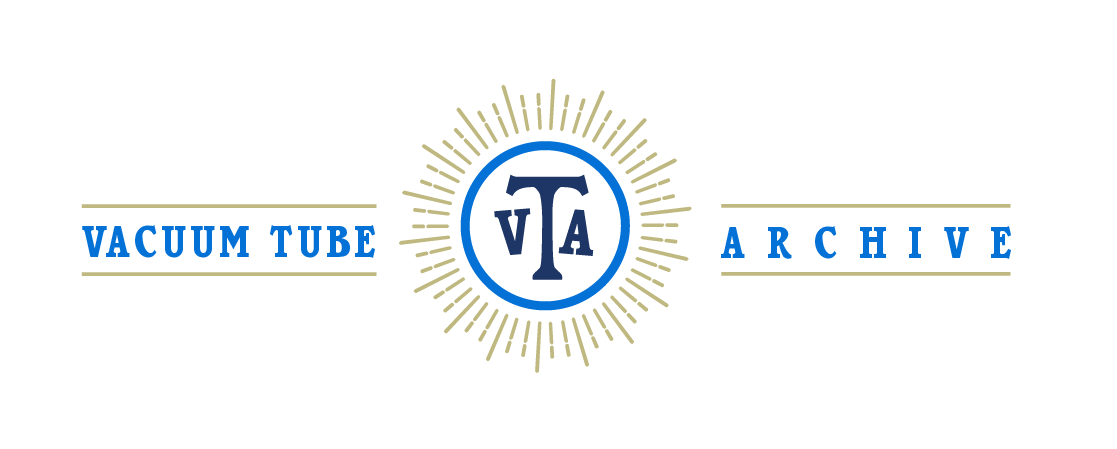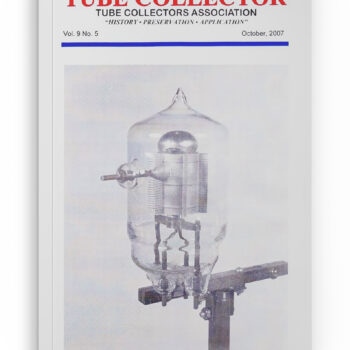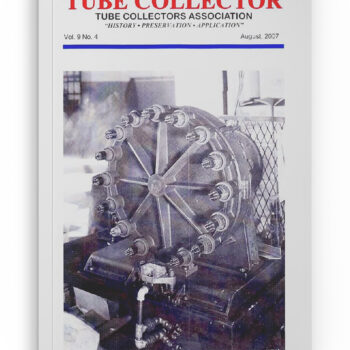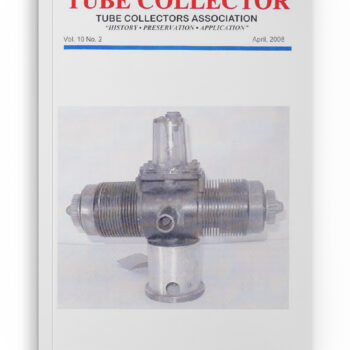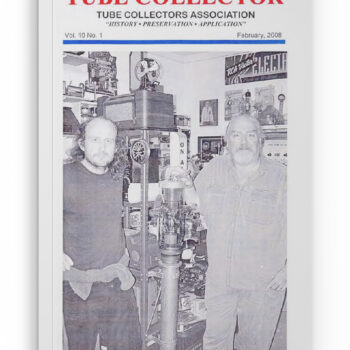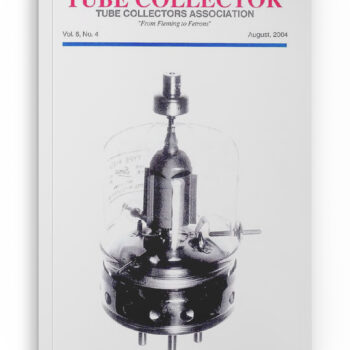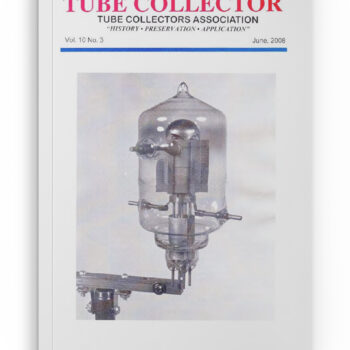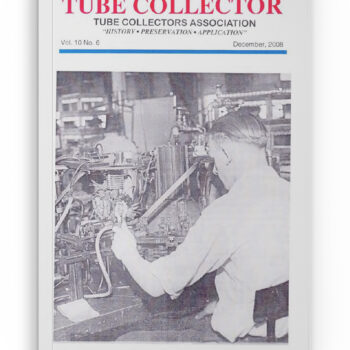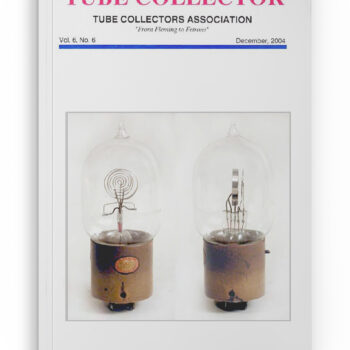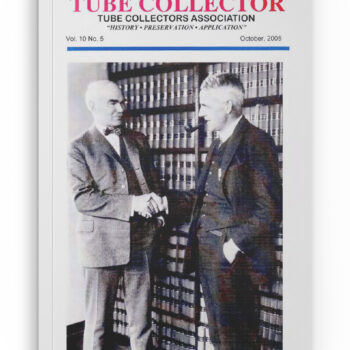On the Cover The Eitel-McCullough X-7 triode of mid-1942, one of many exploratory designs that eventually yielded the 527 radar tube. In this issue
Category: Magazines
Vol. 9, No. 4
On the Cover The base-branding machine in the De Forest Radio Co. plant, ca. 1929. The five-pin basses rotate into contact with the branding die – the white object at lower center above the pipe elbow. Heated by a gas flame just below, it burns the De Forest script logo into the base. In this...
Vol. 10, No. 2
The Western Electric 7C22, a packaged push-pull radar oscilator. See story on p. 16 In this issue
Vol. 10, No. 1
Daniel Stocks, Australian microwave-tube expert, left visits Ron Lawrence and his “Radio Heaven” display in North Carolina. Photo: Robert Lozier. In this issue
Vol. 6, No. 4
On the Cover The Eimac X272 developmental tetrode from 1944 – a 4-125A with three radial pins added to reduce lead inductance. In this issue
Vol. 10, No. 3
The Eimac X-8 triode of July, 1942, one of the Umpteen proto-types that led to the 527 power tube. In this issue
Vol. 6, No. 5
On the Cover This appears to be British Post Office “Valve Amplifing No. 1,” made by BTH, as discussed in Keith Thrower’s British Radio Valves – The Vintage Years; 1904-1925. The photo is of a sample in the long-abolished tube museum at Bell Laboratories. Photo: Bell Labs, courtesy of Jerry Vanicek. In this issue
Vol. 10, No. 6
Removing sealed-off tubes from a small Sealex machine at the De Forest Radio Co. plant in Passaic, NJ, about 1931. In this issue
Vol. 6, No. 6
On the Cover One version of the George Clark receiving tube, Fig. 1 of Bill Condon’s article that starts on Page 2. In this issue
Vol. 10, No. 5
Lee De Forest jollies-up with Roy Weagant, namesake of a family of external-controlled tubes of ca. 1919. The picture was taken in the officees of Sheffield and Betts, patent attorneys in New York. The origianal caption was “When Grid and Gridless Meet. Phot: Jerry Vanicek. In this issue
